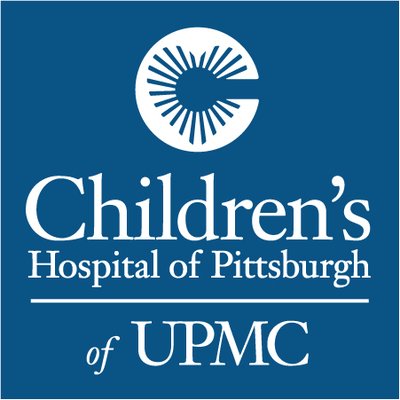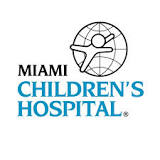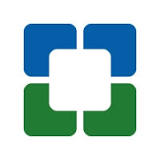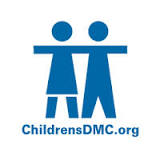Covered CP Stents for the Prevention or Treatment of Aortic Wall Injury Associated With Coarctation of the Aorta
| Status: | Completed |
|---|---|
| Conditions: | Cardiology |
| Therapuetic Areas: | Cardiology / Vascular Diseases |
| Healthy: | No |
| Age Range: | Any |
| Updated: | 4/21/2016 |
| Start Date: | July 2010 |
| End Date: | December 2014 |
Covered Cheatham Platinum Stents for the Prevention or Treatment of Aortic Wall Injury Associated With Coarctation of the Aorta
Coarctation of the aorta (CoA) is a congenital abnormality producing obstruction to blood
flow through the aorta. Coarctation can occur in isolation, in association with bicuspid
aortic valve or with major cardiac malformations. CoA accounts for 5-8% of the 8/1000
(4-6/10,000) children born with congenital heart disease. Most CoA is newly diagnosed in
childhood; < 25% recognized beyond 10 yrs.
CoA is mostly repaired in childhood by surgery or by balloon catheter dilation. Recurrence
rates range from 5-20%. Recurrence is often not recognized until adolescence. Balloon
expandable stents have become the predominant therapy in the USA and Europe for CoA
treatment in this age group. There are no FDA approved stents for this use. Biliary stents
are currently being used off label. Enrollment into a trial of bare metal Cheatham Platinum
(CP) Stents, designed for use in CoA, is completed. The Coarctation of the Aorta Stent Trial
(COAST) aims to confirm safety and efficacy of CP Stent for native and recurrent CoA.
There are CoA patients with clinical situations that place them at high risk of aortic wall
injury during bare metal stenting. Extreme narrowing, genetic aortic wall weakness and
advanced age are examples. Patients may present with aortic wall injury (aneurysm) related
to prior CoA repair. The occurrence after surgical repair is 3-4% and after balloon dilation
10-20%. Repair of these aneurysms is surgically challenging. The use of fabric-covered CP
Stents to prevent or repair aortic wall injury has become the treatment of choice in Europe
and recently in the US through the FDA Compassionate Use process. There are no alternative
devices available in the US. COAST II will test safety and efficacy of Covered CP Stents to
repair or prevent aortic wall injury associated with CoA.
Funding Source-FDA OOPD
flow through the aorta. Coarctation can occur in isolation, in association with bicuspid
aortic valve or with major cardiac malformations. CoA accounts for 5-8% of the 8/1000
(4-6/10,000) children born with congenital heart disease. Most CoA is newly diagnosed in
childhood; < 25% recognized beyond 10 yrs.
CoA is mostly repaired in childhood by surgery or by balloon catheter dilation. Recurrence
rates range from 5-20%. Recurrence is often not recognized until adolescence. Balloon
expandable stents have become the predominant therapy in the USA and Europe for CoA
treatment in this age group. There are no FDA approved stents for this use. Biliary stents
are currently being used off label. Enrollment into a trial of bare metal Cheatham Platinum
(CP) Stents, designed for use in CoA, is completed. The Coarctation of the Aorta Stent Trial
(COAST) aims to confirm safety and efficacy of CP Stent for native and recurrent CoA.
There are CoA patients with clinical situations that place them at high risk of aortic wall
injury during bare metal stenting. Extreme narrowing, genetic aortic wall weakness and
advanced age are examples. Patients may present with aortic wall injury (aneurysm) related
to prior CoA repair. The occurrence after surgical repair is 3-4% and after balloon dilation
10-20%. Repair of these aneurysms is surgically challenging. The use of fabric-covered CP
Stents to prevent or repair aortic wall injury has become the treatment of choice in Europe
and recently in the US through the FDA Compassionate Use process. There are no alternative
devices available in the US. COAST II will test safety and efficacy of Covered CP Stents to
repair or prevent aortic wall injury associated with CoA.
Funding Source-FDA OOPD
There are no prior trials of preventing or treating aortic injury associated with CoA and
thus no basis for comparison. A single outcome assessment will not suffice since patients
can receive a device for either indication. A 3-category Severity of Illness Scale (SIS) was
developed based on clinical judgment of a panel of pediatric cardiologists and reviewed by a
Data & Safety Monitoring Board (DSMB) and the FDA Office of Device Evaluation. Five levels
of severity have been defined for each of the 3 illness categories, including: Upper
extremity hypertension, Upper to lower extremity pressure difference, and Severity of aortic
wall injury. The DSMB will assign a level of illness from the SIS for each patient at
baseline and one year follow up. Improvement by at least one level will indicate clinical
importance. Safety is evaluated by identifying adverse events and comparing their occurrence
to surgical repair of CoA in similar age groups reported in the medical literature.
thus no basis for comparison. A single outcome assessment will not suffice since patients
can receive a device for either indication. A 3-category Severity of Illness Scale (SIS) was
developed based on clinical judgment of a panel of pediatric cardiologists and reviewed by a
Data & Safety Monitoring Board (DSMB) and the FDA Office of Device Evaluation. Five levels
of severity have been defined for each of the 3 illness categories, including: Upper
extremity hypertension, Upper to lower extremity pressure difference, and Severity of aortic
wall injury. The DSMB will assign a level of illness from the SIS for each patient at
baseline and one year follow up. Improvement by at least one level will indicate clinical
importance. Safety is evaluated by identifying adverse events and comparing their occurrence
to surgical repair of CoA in similar age groups reported in the medical literature.
Inclusion Criteria:Inclusion criteria for use of a Covered CP Stent:
Native or recurrent aortic coarctation*associated with ONE OR MORE of the following:
1. Acute or chronic aortic wall injury, or
2. Nearly atretic descending aorta to 3 mm or less in diameter, or
3. Genetic Syndromes associated with aortic wall weakening. Individuals with genetic
syndromes such as Marfan Syndrome, Turner's Syndrome or familial bicuspid aortic
valve and ascending aortic aneurysm, or
4. Advanced age. Men and woman aged 60 years or older.
- The significance of aortic obstruction is left to the judgment of the
participating investigator.
indications might include mild resting aortic obstruction associated with:
Exercise related upper extremity hypertension; Severe coarctation with multiple and/or
large arterial collaterals; Single ventricle physiology Left ventricular dysfunction
Ascending aortic aneurysm
+ Aortic wall injury might include: Descending aortic aneurysm Descending aortic
pseudo-aneurysm Contained aortic wall rupture Non-contained rupture of the aortic wall
Exclusion Criteria:
1. Patient size too small for safe delivery of the device. The absolute lower limit for
inclusion under this protocol is 20 kg. However, serious femoral artery injury can
occur in small patients, particularly those in the 20-30 kg range and this risk must
be reviewed in detail with parents or guardians of children in this weight range.
2. Planned deployment diameter less than 10 mm or greater than 22 mm
3. Location requiring covered stent placement across a carotid artery*
4. Adults lacking capacity to consent
5. Pregnancy
- crossing or covering of a subclavian artery is acceptable in certain situations,
but only after alternative treatments have been considered.
We found this trial at
19
sites
Nationwide Children's Hospital At Nationwide Children’s, we are creating the future of pediatric health care....
Click here to add this to my saved trials
3333 Burnet Avenue # Mlc3008
Cincinnati, Ohio 45229
Cincinnati, Ohio 45229
1-513-636-4200

Cincinnati Children's Hospital Medical Center Patients and families from across the region and around the...
Click here to add this to my saved trials
Duke University Younger than most other prestigious U.S. research universities, Duke University consistently ranks among...
Click here to add this to my saved trials
Miami Children's Hospital Welcome to Miami Children
Click here to add this to my saved trials
Children's Hospital of Philadelphia Since its start in 1855 as the nation's first hospital devoted...
Click here to add this to my saved trials
4401 Penn Avenue
Pittsburgh, Pennsylvania 15224
Pittsburgh, Pennsylvania 15224
412-692-5325

Children's Hospital of Pittsburgh of UPMC UPMC is one of the leading nonprofit health systems...
Click here to add this to my saved trials
Children's Healthcare of Atlanta Whether treating a toddler in an emergency or supporting a teen...
Click here to add this to my saved trials
Johns Hopkins Hospital Patients are the focus of everything we do at The Johns Hopkins...
Click here to add this to my saved trials
Boston Children's Hospital Boston Children's Hospital is a 395-bed comprehensive center for pediatric health care....
Click here to add this to my saved trials
Cleveland Clinic Foundation The Cleveland Clinic (formally known as The Cleveland Clinic Foundation) is a...
Click here to add this to my saved trials
Children's Medical Center of Dallas Children's Medical Center is private, not-for-profit, and is the fifth-largest...
Click here to add this to my saved trials
Children's Hospital of Michigan Since 1886, the Children's Hospital of Michigan has been dedicated to...
Click here to add this to my saved trials
Click here to add this to my saved trials
Click here to add this to my saved trials
Click here to add this to my saved trials
Click here to add this to my saved trials
Click here to add this to my saved trials
Click here to add this to my saved trials
111 Michigan Ave NW
Washington, District of Columbia
Washington, District of Columbia
(202) 476-5000

Childrens National Medical Center As the nation’s children’s hospital, the mission of Children’s National Medical...
Click here to add this to my saved trials









